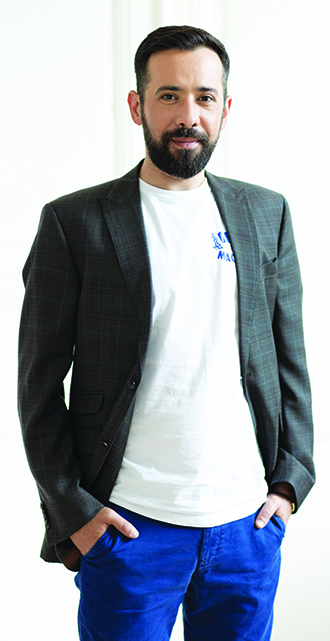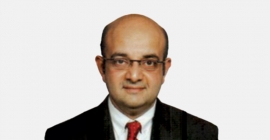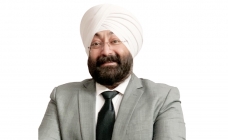‘Micro-buying is growing by the minute’
By Rajiv Raghunath - November 23, 2020
The pandemic has accelerated the need for micro-buying and contextual campaigns, states Radu Bogdan Savonea, Co-Founder & CEO of TPS Engage, a dynamic self-service DOOH programmatic DSP, works with over 100.000 digital
 TPS Engage is at the forefront of offering contextual DOOH advertising tools. Do you see brands recognising the advantage of serving the ‘right ad at the right time to the right people’?
TPS Engage is at the forefront of offering contextual DOOH advertising tools. Do you see brands recognising the advantage of serving the ‘right ad at the right time to the right people’?
I feel that COVID-19 was both the best and the worst thing to happen to the OOH industry. Worst, because it put a lot of people and businesses in a difficult situation. Best, because it showed how dynamic the world we are living in is and how context matters more than anything. In our case, after the initial lockdown, we’ve seen more and more companies come to us because we can offer standard micro-buying capabilities that fit their needs: showing ads on certain screens in certain intervals, where they know their audience will react to it.
Recently, fans of Pewdiepie (one of the largest YouTube channels with 107 million subscribers) reached out and planned a campaign on a highway billboard in Los Angeles for a few hours. They received international attention, with Pewdiepie commenting on the billboard in his videos and on Reddit, with total views surpassing 5 million within 48 hours of the launch.
In recent months TPS Engage as a DSP has signed up with several SSPs. Is that a sign that DOOH programmatic is taking deep roots?
Our belief is that DOOH programmatic is still trying to find its identity. It has grown exponentially in the past 5 years and will continue to grow, yet the market is still fragmented and extremely reactive to agency demand rather than building a standard solution for all - like Google and Facebook did more than a decade ago. Despite the murky waters, this year we’ve seen a lot of digital billboard owners accept programmatic as part of the industry’s future, which simply means a future where DOOH can be transacted equally and openly is within view.
Do you see DOOH programmatic bringing more ad dollars to OOH, or is it a case of spending moving away from classic formats to DOOH? Is DOOH programmatic making brands believe more in this medium?
It all depends on the model and approach. Currently, from what I’ve seen, the majority of ad dollars transacted programmatically by traditional agencies would have ended up in OOH anyway. This is because apart from a buying model, not much is different. The value of programmatic is not just allowing agencies to buy inventory easily, but to offer a standardised approach that makes sense within the given channel. For online marketing, that’s precise targeting, one to one communication and recurrent messages. For (D)OOH, that’s contextual marketing and micro-buying.
That’s our bet for the future of DOOH and so far it’s paying off - over 70% of clients that work with us have never done programmatic DOOH before and use their online budgets to fund their campaigns.
Micro-buying is one aspect of DOOH programmatic. Have you seen an uptick in micro-buying of media slots lately?
Definitely, the demand is growing by the minute. It was growing before COVID-19, since the majority of companies don’t need always-on campaigns, but the pandemic has accelerated the need for micro-buying and contextual campaigns.
The reason is very straightforward - if I were to tell you, you have to buy a campaign for a minimum of 3 weeks, would you do it? What if a city goes into lockdown? Even if you get a refund for your campaign, all your planning is ruined - thinking in small doses (campaigns) actually increases effectiveness and impact.
We actually had a case with a client in Ireland that was doing daily campaigns with updated creatives. The country is now in lockdown and he actually told us the reason he was doing daily buys was that he knew another lockdown was inevitable.
TPS Engage operates in 4 cities globally. Are you planning to increase your global reach, and which are your target markets? Any thoughts on the India DOOH market?
We have a physical presence in 4 cities, but actually operate in 25 markets - mainly across US, Europe, MENA and APAC. Our main focus for the next year is definitely US and Western Europe, as we’re seeing significant growth coming from those markets.
India has been on our radar for a long time and the growth happening there is outstanding - yet we feel we needed a local partner to properly operate in the region, as we don’t have the local expertise. We will actually announce a partnership in the region soon.
With DOOH programmatic tools becoming more popular, are you seeing commensurate increase in media investments in this space? Are media owners looking to invest more in DOOH networks?
Certainly, media owners have been expanding their inventory at increasingly higher rates in the past years. With strategic digital billboards (which usually means a combination between screen quality, location, visibility, market fit and proper pricing) our partners see an ROI happening within 24 months since making the screen commercially available. We’ve also seen an increase in the number of real estate developers that add DOOH to their portfolio - be it indoor screens targeted at residents or large outdoor screens placed on buildings with high commercial value.

Stay on top of OOH media trends








